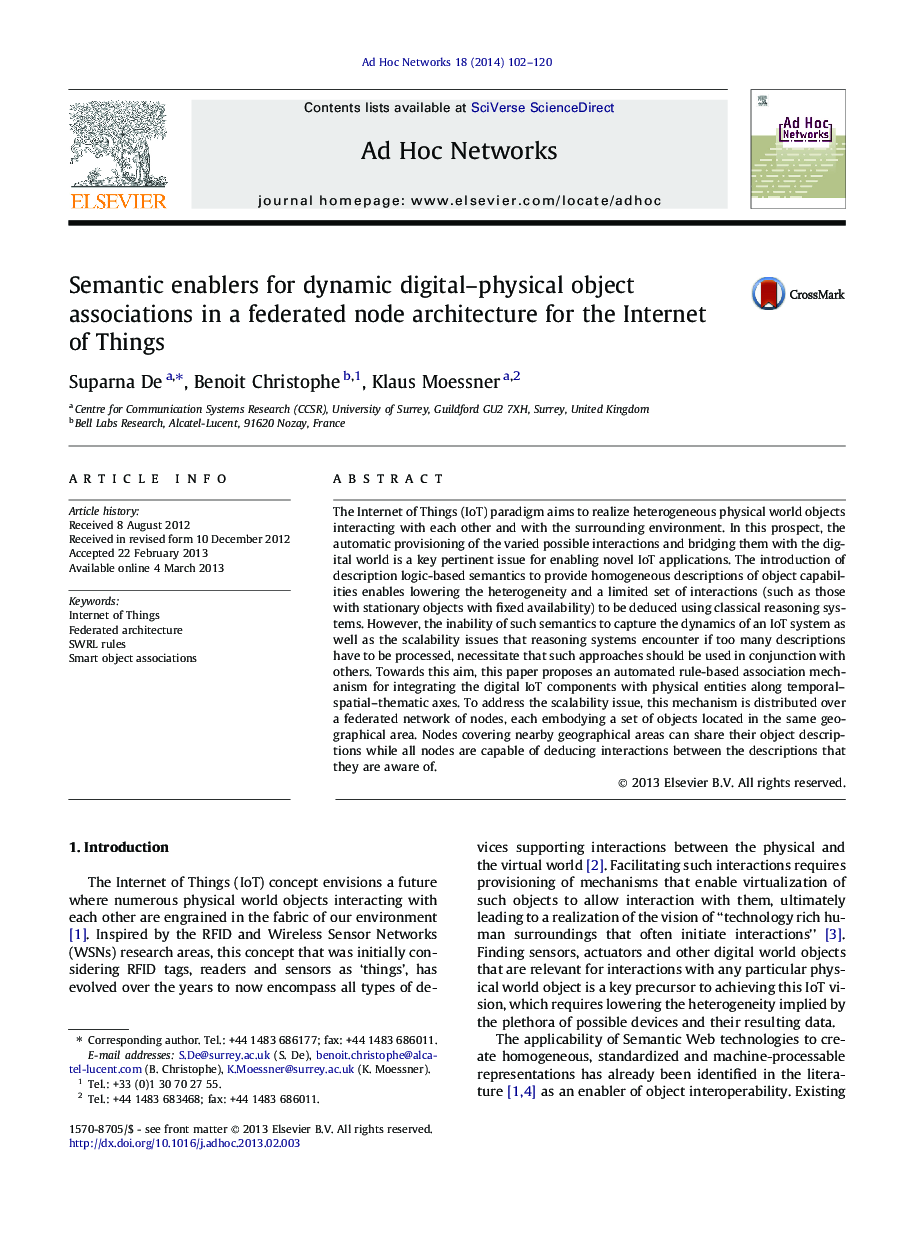| Article ID | Journal | Published Year | Pages | File Type |
|---|---|---|---|---|
| 444421 | Ad Hoc Networks | 2014 | 19 Pages |
The Internet of Things (IoT) paradigm aims to realize heterogeneous physical world objects interacting with each other and with the surrounding environment. In this prospect, the automatic provisioning of the varied possible interactions and bridging them with the digital world is a key pertinent issue for enabling novel IoT applications. The introduction of description logic-based semantics to provide homogeneous descriptions of object capabilities enables lowering the heterogeneity and a limited set of interactions (such as those with stationary objects with fixed availability) to be deduced using classical reasoning systems. However, the inability of such semantics to capture the dynamics of an IoT system as well as the scalability issues that reasoning systems encounter if too many descriptions have to be processed, necessitate that such approaches should be used in conjunction with others. Towards this aim, this paper proposes an automated rule-based association mechanism for integrating the digital IoT components with physical entities along temporal–spatial–thematic axes. To address the scalability issue, this mechanism is distributed over a federated network of nodes, each embodying a set of objects located in the same geographical area. Nodes covering nearby geographical areas can share their object descriptions while all nodes are capable of deducing interactions between the descriptions that they are aware of.
